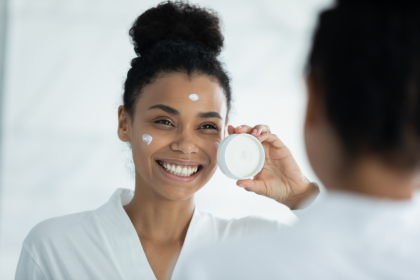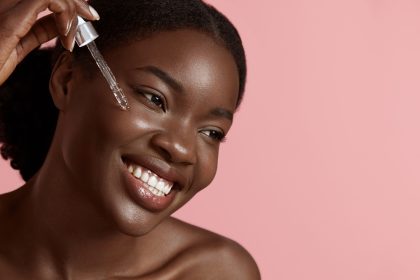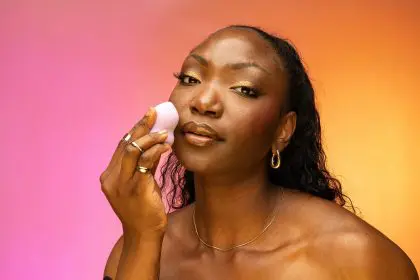You spray it on every morning to lock in your makeup and achieve that coveted all-day wear, but your setting spray might be the hidden culprit behind persistent breakouts, clogged pores, and skin texture issues that seem to appear out of nowhere. These seemingly innocent finishing products contain ingredients that can create a barrier on your skin that traps bacteria, oil, and dead skin cells beneath the surface.
The irony is that while setting sprays promise to improve your makeup’s appearance and longevity, they may be creating skin problems that require more makeup to cover up. Understanding what’s in these products and how they interact with your skin can help you make better choices for both your makeup routine and skin health.
Film-forming polymers create impermeable barriers
Most setting sprays contain film-forming polymers like PVP, acrylates, or vinyl compounds that create a thin, invisible layer over your makeup to prevent smudging and fading. While effective for makeup longevity, these synthetic polymers can also seal your pores and prevent normal skin functions like oil regulation and cellular turnover.
These polymer films don’t breathe the way natural skin barriers do, potentially trapping sebum, bacteria, and dead skin cells beneath the surface where they can cause inflammation and acne. The longer the setting spray stays on your skin, the more opportunity these trapped materials have to create problems.
Many people apply setting spray over their entire face daily without realizing they’re essentially shrink-wrapping their skin in synthetic materials that may not be compatible with healthy skin function. This daily accumulation can lead to chronic pore blockages that become increasingly difficult to clear.
Alcohol content disrupts skin barrier function
High alcohol content in many setting sprays initially feels refreshing and helps the product dry quickly, but alcohol is highly drying and can disrupt your skin’s natural barrier function. When your skin barrier is compromised, it often responds by producing more oil to compensate, which can then become trapped beneath the polymer film.
The drying effect of alcohol can also cause skin cells to stick together rather than shedding naturally, contributing to the buildup of dead skin that combines with trapped oil to form comedones. This process is particularly problematic for people with naturally oily or combination skin.
Repeated alcohol exposure from daily setting spray use can create a cycle where your skin becomes increasingly reactive and prone to breakouts, requiring more coverage that necessitates more setting spray to maintain, perpetuating the problem.
Silicones create long-term buildup issues
Many setting sprays contain silicones that provide immediate smoothing effects and help makeup apply more evenly, but these ingredients can accumulate on the skin over time if not properly removed. Silicone buildup can create a barrier that prevents beneficial skincare ingredients from penetrating while trapping problematic substances beneath.
Water-based cleansers often can’t effectively remove silicone buildup, meaning that residue accumulates with each application unless you’re using oil-based or micellar cleansers specifically formulated to break down these ingredients. Many people don’t realize their cleansing routine isn’t adequate for the products they’re using.
The combination of silicones with natural skin oils can create a particularly stubborn mixture that requires more aggressive cleansing to remove, potentially leading to over-cleansing that strips the skin and triggers increased oil production and sensitivity.
Application method amplifies problems
Spraying setting spray directly onto the face can force product into pores and create uneven distribution that leads to concentrated buildup in certain areas. The fine mist can penetrate deeper into pores than intended, especially when applied to slightly damp makeup or skin.
Many people apply setting spray too heavily or too frequently throughout the day, layering multiple applications that compound the pore-clogging potential. Each additional layer increases the thickness of the film on your skin and the likelihood of trapping debris and oil.
Using setting spray over sunscreen can create particularly problematic interactions, as the combination of chemical sunscreen ingredients, makeup, and setting spray polymers can form complex mixtures that are difficult to remove and more likely to cause skin reactions.
Safer alternatives and application strategies
Choose setting sprays with minimal ingredients, avoiding products that contain long lists of synthetic polymers, high alcohol content, or multiple types of silicones. Look for products that use natural film-forming ingredients or lighter formulations that provide hold without creating impermeable barriers.
Apply setting spray to a makeup brush or beauty sponge and gently press it onto your makeup rather than spraying directly onto your face. This method provides more controlled application and reduces the amount of product that penetrates into your pores.
Use setting spray only when necessary for special events or long days rather than as part of your daily routine. Your makeup may not last quite as long, but your skin will have more opportunity to function normally and stay healthy.
Invest in a thorough evening cleansing routine that includes oil-based or micellar cleansing followed by a gentle water-based cleanser to ensure complete removal of setting spray residue. Pay particular attention to areas where you typically apply the most product.
Consider alternatives like setting powder in targeted areas or lighter makeup formulations that don’t require setting spray to achieve acceptable wear time. Sometimes the solution is adjusting your makeup routine rather than adding more products to make it work.













